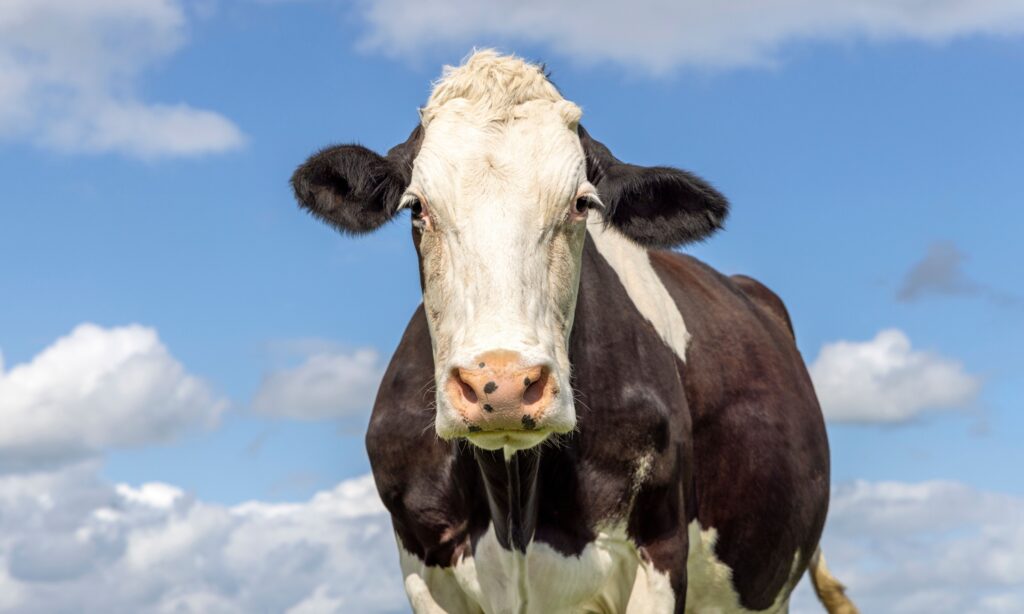As the world grapples with the growing effects of climate change, scientists are exploring novel solutions to ensure a sustainable food supply, and while it may sound surprising, one solution lies in cow sweating.
Agriculture faces unprecedented challenges as global warming progresses. Heat stress, a major threat to livestock, causes significant losses in productivity and threatens the livelihoods of farmers around the world.
But researchers are discovering that the simple act of cow sweat may be the key to mitigating these challenges.
Cow sweating
We’ve all seen cows lazing around in the sun, their fur glistening with sweat, but what if that sweat was also the secret to their survival in a hot world?
A recent study led by University of Florida Institute of Food and Agricultural Sciences (UF/IFAS) professor Raluca Matieescu delved into the genetics of sweating in cows, finding that a cow’s ability to sweat isn’t just a way to stay cool, it’s a matter of survival.
As global temperatures rise, heatstroke is becoming a major threat to cow health and productivity. When cows are too hot, they stop eating, which hinders growth and reproduction.
As a result, food supplies from these cattle herds are at risk: in scorching subtropical regions, heat stress wreaks havoc on beef production, costing cattle producers $369 million a year in lost productivity.
Genetic blueprint for sweating cows
Matiesk’s research offers a ray of hope: It finds that a cow’s ability to sweat is determined in part by genes, meaning breeders may be able to select cows with the better sweat abilities, and thus raise more fertile herds, even in sweltering heat.
“Heat stress is the biggest threat to food security,” Matiesk explains. “Heat stress affects cattle growth, production and reproduction.”
By identifying genetic markers associated with the ability to sweat, farmers could breed heat-tolerant cattle that can remain productive in a warming world.
Brangus: The sweatiest breed?
The study focused on Brangus cattle, a cross between Brahman and Angus cattle. Researchers examined 2,401 Brangus cattle from two Florida ranches and analyzed skin biopsies to evaluate traits such as sweat gland area, depth and length.
Through genotyping and advanced software, the researchers estimated the genetic parameters that influence sweating ability.
The findings are intriguing: Moderate variations in sweating ability are indeed heritable, meaning that by selecting cows for specific genetic markers, farmers can breed herds that are better able to cope with rising temperatures.
Interestingly, both Brahman and Angus genes had a positive impact on the sweating ability of Brangus cattle, highlighting the potential for increased heat tolerance through breeding.
Cows sweating for a sustainable future
This study highlights the importance of addressing the detrimental effects of heat stress on cattle, which has significant implications on cattle health, growth and reproduction, and poses a threat to global food security as temperatures rise due to climate change.
“There are food security concerns because unless measures are taken to affect the ability of cattle to reproduce under heat stress, cattle will not reproduce,” Matiesk said.
By focusing on genetic selection for increased sweating ability, scientists aim to develop breeds of cattle that are more resistant to heat stress. These heat-tolerant cattle can remain productive and fertile in hotter environments, ensuring a stable food supply for a growing world population.
This study highlights the potential of leveraging genetic tools to mitigate the challenges posed by climate change in the agricultural sector.
The Future of Agriculture
While the concept of a sweating cow may raise some eyebrows, it is testament to the ingenuity of scientists tackling the challenge of climate change.
By focusing on a seemingly mundane aspect like sweating, we can develop innovative solutions that ensure a sustainable food supply for future generations.
The next time you see a cow sweating to cool itself, remember that this simple act could be a key factor in our future food security.
Thanks to insightful research, we are one step closer to a world where cows not only provide nutrition but also contribute to more resilient and sustainable agricultural systems.
The research was published in the Journal of Animal Science and Biotechnology.
—–
Liked this article? Subscribe to our newsletter for more fascinating articles, exclusive content and updates.
Check it out with EarthSnap, a free app brought to you by Eric Ralls and Earth.com.
—–


